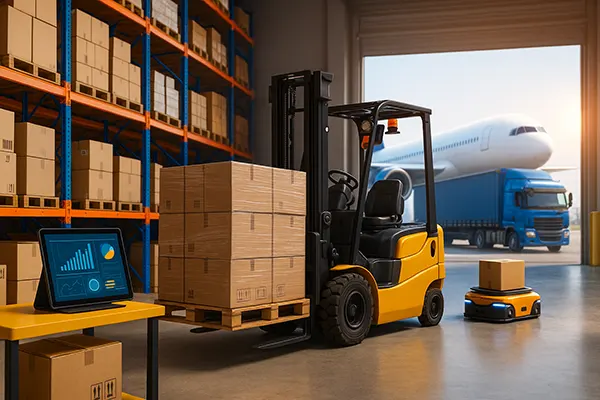
Global Supply Chains in 2025: How Companies Are Adapting to New Realities
The year 2025 marks a turning point for global supply chains. After years of disruptions caused by the COVID-19 pandemic, geopolitical tensions, and climate-related events, businesses are forced to rethink traditional logistics strategies. Adapting to the new landscape is no longer optional — it’s essential for operational resilience and competitive edge.
Reshaping Supply Chains in the Face of Uncertainty
One of the most significant transformations in 2025 is the shift toward regionalisation. Companies are moving away from complex, globe-spanning logistics routes in favour of shorter, more resilient regional networks. This trend has been particularly noticeable in Europe and North America, where firms are prioritising local suppliers to mitigate cross-border vulnerabilities.
Digital integration has also become central. Businesses now rely on advanced software for real-time inventory tracking, demand forecasting, and predictive maintenance. By implementing AI-powered analytics, firms gain better visibility and control over their operations, reducing delays and costs.
Moreover, supply chain sustainability is under close scrutiny. From carbon footprint tracking to ethical sourcing, stakeholders demand accountability. Many enterprises have committed to net-zero targets by 2030, which directly impacts how materials are sourced and transported today.
Challenges and Risk Management Strategies
Despite progress, challenges remain. Geopolitical tensions — including trade restrictions and sanctions — continue to disrupt global trade. In response, companies are investing in risk mitigation strategies, such as diversifying suppliers and building multi-sourcing models.
Another key concern is the availability of skilled labour. The logistics sector faces talent shortages across warehousing, transport, and data analysis. To counter this, firms are partnering with universities and investing in training programmes to build a future-ready workforce.
Climate change also plays a disruptive role, with natural disasters impacting supply routes and production hubs. Companies are investing in climate risk assessments and integrating environmental forecasting into supply chain planning.
Technology and Automation as Driving Forces
Automation is transforming supply chain efficiency. Autonomous vehicles, drones, and robotics are increasingly used in warehouses and last-mile delivery. This not only reduces human error but also increases speed and precision in fulfilment processes.
Blockchain is another crucial innovation. It enables secure, transparent transaction records across supply networks. In 2025, more businesses are leveraging blockchain for tracing goods from source to shelf, enhancing trust and compliance.
Cloud-based solutions allow seamless coordination across multiple locations. Integrated ERP (Enterprise Resource Planning) systems facilitate communication between suppliers, manufacturers, and distributors in real time, reducing bottlenecks and miscommunication.
Investing in Digital Capabilities
Companies are no longer treating digitalisation as a luxury. In 2025, it’s a necessity. Investment in digital twin technology — which mirrors real-time operations in virtual models — helps simulate scenarios and optimise decisions before implementation.
Cybersecurity has also moved to the forefront. As systems become more connected, vulnerabilities increase. Businesses are prioritising secure digital architecture, implementing multi-layered defence systems and regular audits.
Finally, data sharing across the supply ecosystem enables collaborative problem-solving. This approach fosters resilience, as companies can adapt more swiftly to changes in supply or demand.

New Economic Models and Strategic Partnerships
The economics of supply chains have shifted. Rising transportation and energy costs are pushing firms to optimise logistics routes and switch to more cost-effective transport methods, including rail and electric fleets.
Subscription-based logistics services are also on the rise. These offer flexibility and scalability without the burden of large capital investments, making them attractive for mid-sized enterprises adapting to fluctuating demand.
Collaborations are playing a bigger role. Strategic alliances with logistics providers, fintech firms, and regional governments help companies navigate regulatory complexity and unlock new growth opportunities.
The Role of ESG in Decision-Making
Environmental, Social, and Governance (ESG) metrics are increasingly shaping supply chain strategy. Companies are not only aiming for compliance but also using ESG as a competitive differentiator.
Consumers, investors, and regulators expect transparency. Firms are now required to disclose environmental impacts, labour practices, and ethical standards across their supply networks. This encourages more responsible sourcing and strengthens brand integrity.
Additionally, businesses adopting circular economy models — such as product-as-a-service and reverse logistics — are finding new value streams while reducing waste. This strategic shift not only supports sustainability goals but also enhances long-term profitability.
